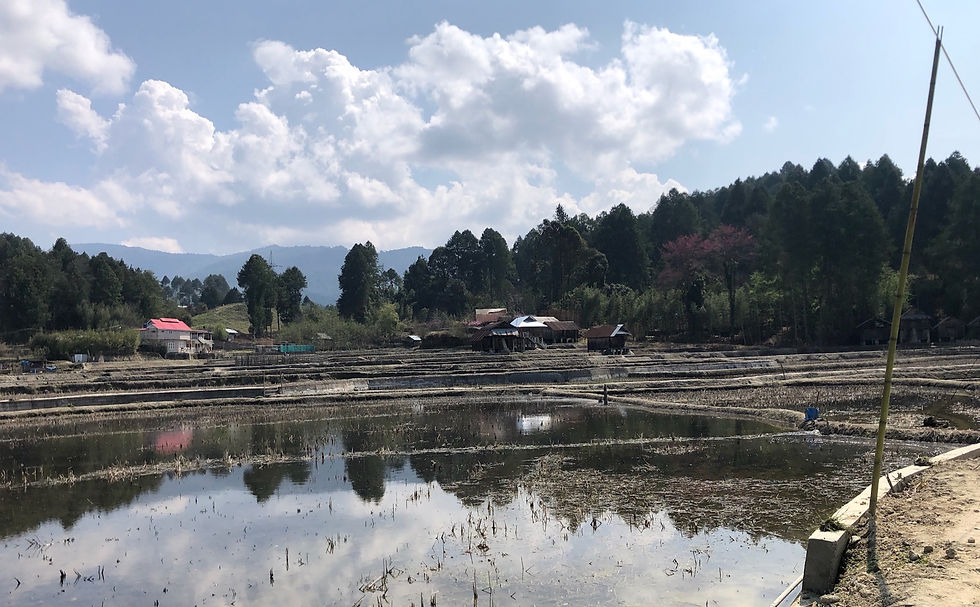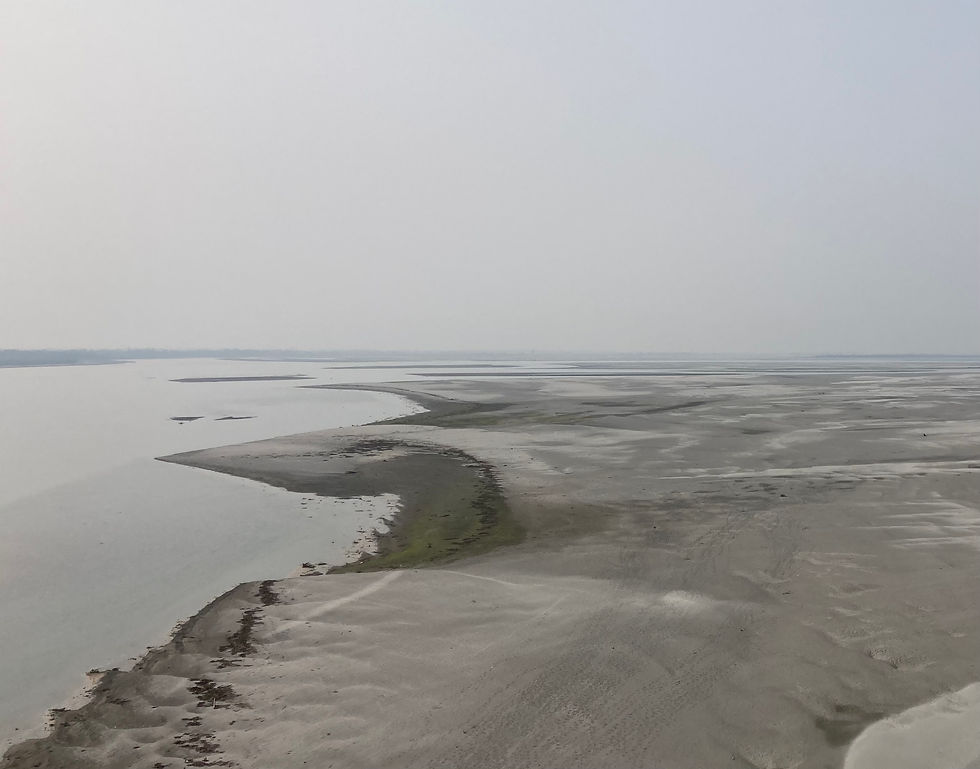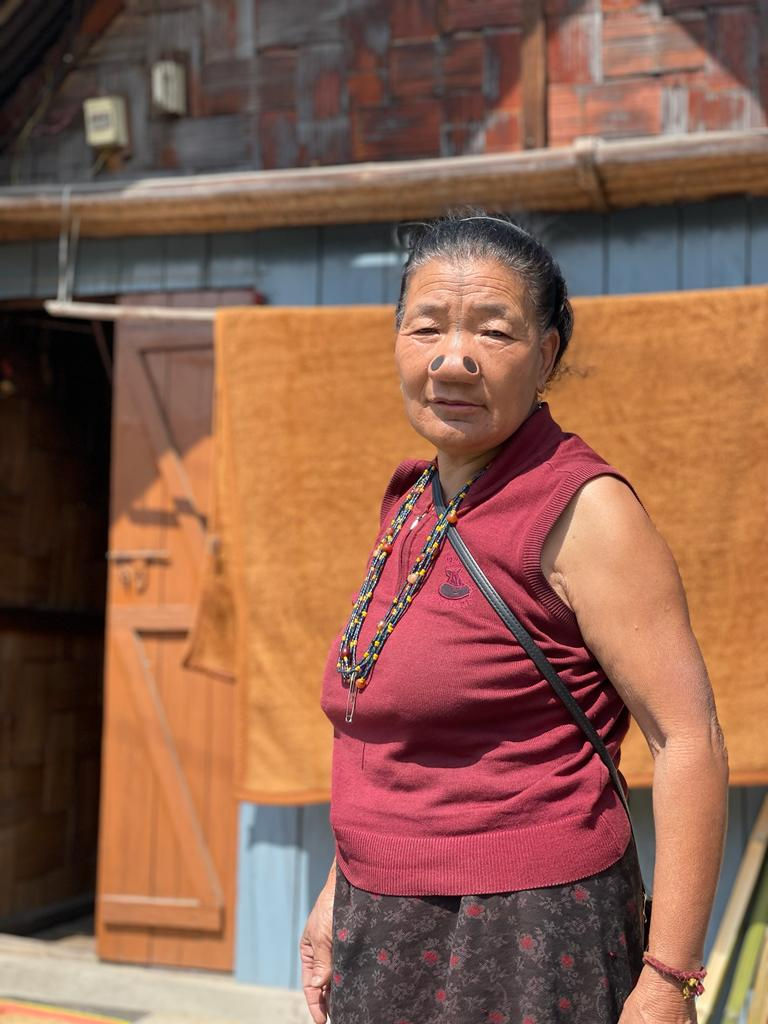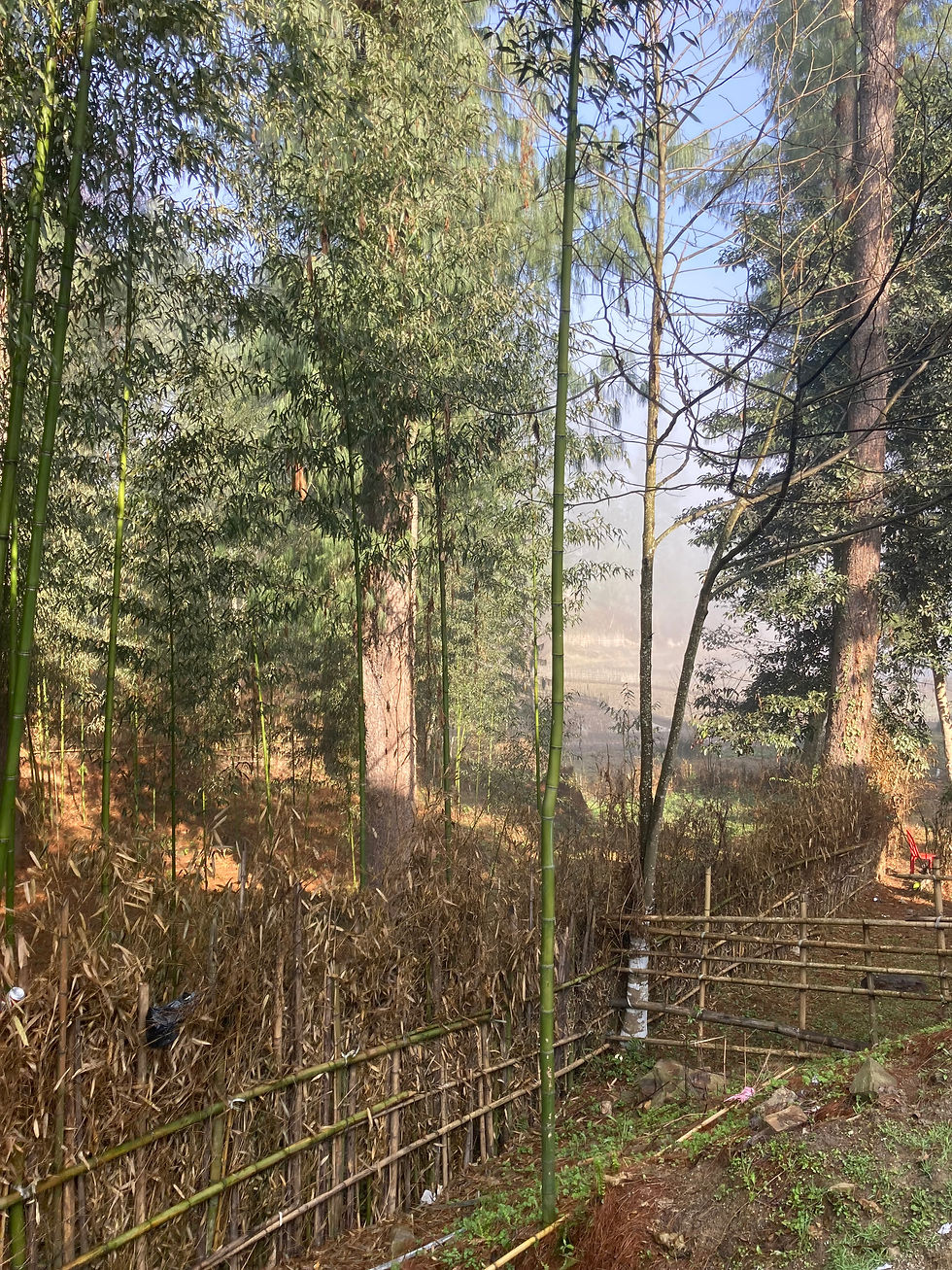
How about this?
A rural population of 40,000 that farms its land in an organic sustainable way without recourse to machinery, chemicals or fertilisers, is self-sufficient in its food needs, generates minimal waste, has strong community bonds underpinned by a spiritual belief system, uses virtually no plastic or consumer goods, and has so far, eschewed the consumerism of the last 30 years. Worth a look?

We are going to check it out.

But first we must bridge the Brahmaputra River, all five kilometres of it. It is low season so mostly it is sand banks cut with broad ribbons of liquid silver snaking to the horizon. Then after an hour’s drive through the verdant plains, with a million sacred cows chomping on the stubble on the dry paddy fields, we start to climb what are the foothills of the Himalayas. We start in rich tropical forest but as we climb to the plateau, it become an Alpine biome with splendid blue firs dominating the ridges. If we kept on going, we would end up in China only 100 miles north.

We are in Arunachal Pradesh heading for Ziro, the home of the Apatami tribe, on at last, a road of smooth new tarmac. As a result, we arrive before our estimated ETA and have time to visit the market before finding our hotel. It is noticeable cooler here as we are at 1600 metres – think Courcheval 1650 – but I am still wearing shorts and a T shirt and shiver.
This is the home of the remarkable Apatami tribe, best known, (if that is not a tautology as almost no one has heard of them) for the nose plugs worn by the older women. But this distracts from the sustainable and balanced lifestyle they still seem to enjoy, which has secured UNESCO recognition as being of ‘outstanding universal value’.

The origins of these mountainous tribal people is unclear, and like the hills they inhabit, shrouded in mist and legend. The biggest single issue is lack of a written script – and there are certainly no books. Verbal history traces their origins through 20 generations with a migration from the mythical lands of Wi and Wiipyo Supuñ, closely guarding their seeds of vital crops of rice, pine, mustard and bamboo.

The town is simple, primitive perhaps, in build and aspiration but clean and functional, and for a town in India the traffic is minimal. It sits on a plateau of relatively flat land before the mountains get serious, in an area that has the highest rainfall in the world. The market comprises an open walled structure akin to those ancient market buildings sometimes seen in England, save that this has raised concrete platforms on which the stallholders sit with their produce. I had assumed that it was unlikely that we would actually see any women with nose plugs, as the practice ceased in the 1970s following a statutory ban, but blow me, the first woman I see in the market has a tattooed face and later there is a trader with the full Monty. To our eyes these noses are bizarre, disfiguring, ugly and must surely have some negative health effects. But gaze is important; they might find the gentlefolk of Glastonbury with cotton reels in the ears a bit peculiar and inexplicable. (Me too!). But I do find these adornments extraordinary, and difficult to photograph without seeming intrusive and insensitive.

The origin of the practice is, once again, unclear. The usual story, reiterated by Wikipedia is that it was imposed by the men to make the beautiful Apatani women less attractive to marauding wife hunters from other tribes. Chada our guide, has a different story. He tells of a woman failing to find a husband who pleaded with her parents to let her tattoo her face and insert nose plugs. She finally won them over and immediately found a fella. The other single women were so impressed that they followed the trend.
Clearly the plugs are so big that they must be the endpoint of gradual stretching, so it is hardly feasible that our lonely spinster suddenly went out husband hunting with the massive plugs that we see today. Perhaps it started as smaller nasal embellishment and things got a bit out of hand, a bit like Kardashians buttocks. (And all before TikTok.) I was left asking all sorts of questions. I couldn’t see clearly how far the plugs intruded but certainly one woman I saw appeared to have quite occluded nostrils. I also wondered who made them; would there have been a nose plug maker in the village, between the blacksmith and the midwife? The most probable explanation is a combination of tribal identity and its evolution. But Chada confirms that there was no coercion – it was what one did – and worn with pride.

Now we are strolling though one of the villages of the plateau, stilted wooden houses line tidy street, with bamboo panelled walls and tin roofs. There is no traffic save for the occasional motorbike, passers-by go about their business, a woman cleans rice, a man stands on his verandah, a nose plugged woman bustles about next to him. One house is open, and Chada asks if we can look inside. There is a small anteroom adorned with the votive bird feathers, then a large single room with central fire pit used for cooking and heat. How similar to the houses in Nagaland 100 miles south of the Brahmaputra! It is quite smoky, and I ask Chada whether they suffer from respiratory problems. ‘Oh No. They are very healthy,’ he confirms.
‘So, what is the life expectancy?’
‘About 60,’ he replies. Blimey.
I have tried to look this up but can’t get specific information. In general the tribal groups across India have a life expectancy of 63 compared with a national figure of 70. Having said this if the nose piercing (performed at puberty) ceased mid-seventies, to have a nose plug now you have to be older than 60 and many of the women look much older.

Most of the houses have a bamboo pole bearing a white flag with red flaming sun emblem. We ask Chada what this is all about. He explains the Apatani are animists worshipping, (if that is not too strong a word) the sun and the moon, or in their dialect Donyi and Polo, (signified by the fetching flag) along with various other deities. They have no churches or temples but there are shrines. There are Christians in the valley, predominantly Baptist, but there has been a reaction against these faiths with the fear that Christianity will erode their traditional values. The presence of the Donyi Polo flag outside the houses is the equivalent of the UK election sticker in the window: Christians keep away – we are confirmed heathens!

Outside each house is a neatly enclosed bundle of bamboo and other vegetation, which we learn, is sacred and used in several rituals to please the gods. Spirits and omens, along with numerous superstitions and beliefs are still important to the daily round. Interpretation of the runes and appeasement of the gods being secured by sacrifices directed by the shaman. This is usually a chicken with examination of the entrails and liver crucial.

Further along the street tall poles, with bamboo adornment stand adjacent to platforms used for the various festivals that seem to occur most of the time. Sadly, the Nyoko festival was due to start soon after we left. Out comes the rice beer, the pig is killed and the party commences, a month of feasting and dance aiming to cement relations between neighbouring villages, who rotate hosting the event.
We leave the village walking past the back of the houses with their small plots of vegetables or a pig snuffling in the dirt. An old woman with nose plugs is working in a flooded field pulling out weeds, bare footed and bent at the waist. The flooded paddies stretch away in front of us bounded by earthen walls, terraced up towards the distant woodland. This is the core of their ancient agriculture system; sustainable wet rice cultivation, using only compost and manure as fertiliser. But its better than that, on the paths between the wet fields they cultivate other crops like millet and use the flooded fields to breed small fish, which they harvest with the rice.

Along with paddy fields each family will also own a bamboo grove. This is an enclosed area for the cultivation of the bamboo that is so important to their house building, providing props and beams as well as split bamboo matting for walls. The larger timber comes from the Blue Pine which blankets the hills. This is actively forested but is very rarely sold, being mostly used by the villagers for their own needs. We came across a coppice where numerous trees had been felled and found a temporary saw pit with huge hand saw. I had only ever read about saw pits and was thrilled. For years I have been telling people that the superior position of the upper worker is the origin of the term ‘top dog’. It was a marvellous find, daunting, medieval, but judging by the perfect planks stacked nearby, practical and efficient. The saw was scarily sharp, the key to all successful woodwork, and able to produce perfectly parallel planks.
Preparations for the Nyoko festival well in hand on the lapang platform
There is so much more to say about these fascinating people and their homesteads. The theory is that they were forced to develop a self-sufficient, sustainable agrarian system by necessity, isolated as they were on a high plateau. What is so surprising is that it has persisted intact and largely unchanged. Unlike patches of Nagaland there is no intrusion into the forest nor deforestation here. They have recently found that kiwifruit grow well in the climate of the valley, and this is a useful cash crop, but none of the rice paddies have been sacrificed, the fringes of the woodland margin being used for its cultivation. But the big question is can they sustain this lifestyle against the pressures of consumerism? I wouldn’t bet against it, but they mustn’t become a goldfish bowl either.
We were planning a walk in the forest with the affable Chada, but the heavens opened with a crash of thunder as hailstones like mothballs battered the car. Back in the freezing hotel we shivered in the marble hallway as the temperature drops ten degrees. Our walk would have to wait as we are off first thing the next morning to Kaziranga on the trail of the one horned rhino.
The rubbish bins made from bamboo ready for the Nyoko festival

























Kardashians buttocks. (And all before TikTok.) 😂